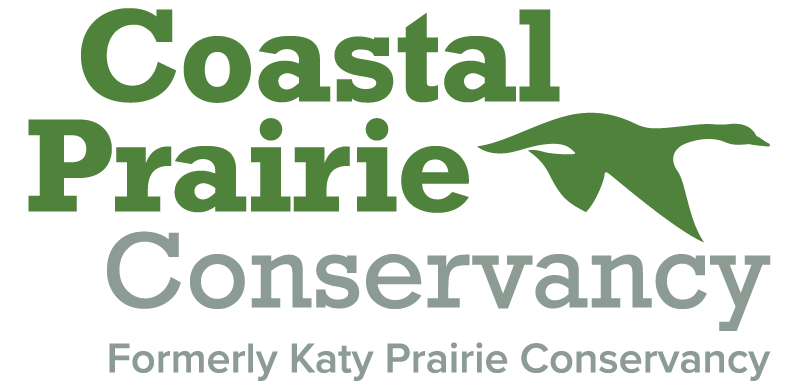State of the Species: Loggerhead Shrike (Lanius ludovicianus)
Written by: Matt Forster, Guest Contributor
The loggerhead shrike (Lanius ludovicianus) is a unique songbird you might see on the coastal prairie. Named for its disproportionately large head, the loggerhead is one of nature’s rare carnivorous songbirds. While many songbirds are content to feast on seeds and grains and insects, the shrike’s diet consists of insects, spiders, rodents, reptiles, amphibians, and even other small birds.
Without the strong talons of a raptor, the shrike relies on its beak to capture prey. The shrike likes to find a high perch near a grassy clearing for hunting. Dropping quickly from the perch, the shrike uses its beak to spear the neck of its target. It then twists: the speed of the drop and strength of the beak causing a whiplash-like injury.
As if a meat-eating songbird wasn’t interesting enough, loggerhead shrikes have learned to use thorns and barbed wire in unique ways that make their diet possible. For example, if the ol’ drop-and-twist attack isn’t sufficient to kill its prey, the shrike may complete the job by impaling the stunned creature on a long thorn. Thorns and barbs are also used to help anchor the meal, allowing the shrike to tear it apart with its beak. Shrikes also leave noxious food (like monarch butterflies) impaled to give the poisons a chance to break down before eating.
White bellied, with gray back and a black mask, the loggerhead shrike is found throughout the southern United States and in the plains east and west of the Rocky Mountains, with breeding territory that stretches into Canada. It is related to the northern shrike—slightly larger overall with a less distinguished head— which can be found in the northeast part of the country.
Along with its northern cousin, the loggerhead shrike was once common throughout most of the United States. According to the North American Breeding Bird Survey, between 1966 and 2015, there was a 76 percent decline in the loggerhead shrike population. The reasons for this decline are not fully understood. The use of chemical pesticides is suspected to be a contributing factor, as is loss of habitat.
Loggerhead shrikes need open areas for foraging (preferring short vegetation) with nearby trees or other elevated perches for hunting. They also need places to nest, safe from predators. It is easy to see how hedgerows around farm fields and pastures would be attractive to the shrike, but these habitats would also increase their exposure to pesticides. To spot the loggerhead shrike, find an open space and look at the places where they might have good view of what’s happening on the ground. Scan fence posts and wire fences, trees overlooking a field, power lines, etc.
The Coastal Prairie Conservancy works to protect grassland habitat that the loggerhead shrike depends on for food and habitat by conserving and restoring coastal prairie lands. Recent restoration activities on the Katy Prairie Preserve such as prescribed burns, removal of deep-rooted sedge, and native seed planting have improved the health of the prairie and resulted in the observation of numerous threatened bird species, including the loggerhead shrike. Your support of coastal prairie conservation protects the loggerhead shrike and the beautiful wide-open spaces that we know and love on the prairie.
Learn more about this bird and the ways you can help with Aububon’s Field Guide.

